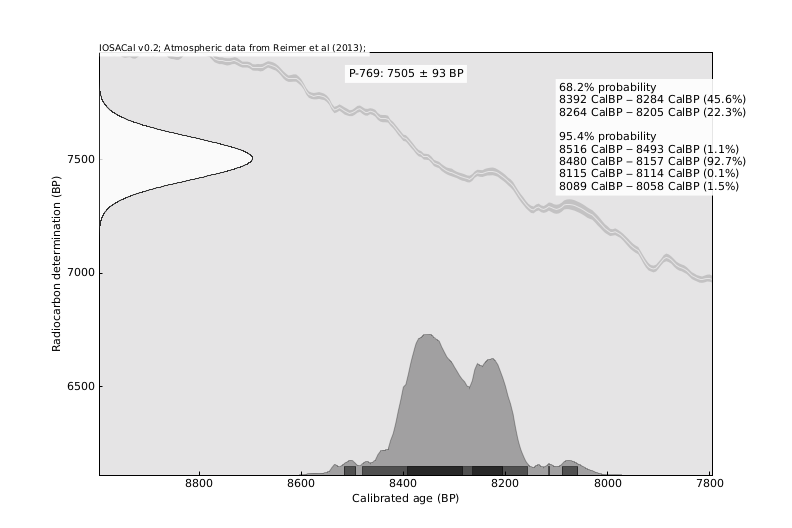IOSACal is a radiocarbon (14C) calibration program
Project description
DOI: https://doi.org/10.5281/zenodo.630455
IOSACal is the open source radiocarbon calibration software of the IOSA project. IOSACal includes:
a programming library
a command-line program
IOSACal is written in the Python programming language and it can run natively on any platform where the Python interpreter is available, including all GNU/Linux distributions, MacOS X and other UNIX operating systems, and Microsoft Windows.
Source code is made available under the terms of the GNU General Public License.
The documentation is online at http://c14.iosa.it/.

Why another 14C calibration software ?
Most available programs for radiocarbon calibration, like OxCal, CALIB and others, are freeware. You don’t have to pay for them, but on the other side you’re not free to modify them as you need, nor to access and study the source code.
This is the main motivation behind IOSACal: creating a free-as-in-freedom radiocarbon calibration software, with a clean programming library, that enables experiments and integration in existing archaeological information systems.
Furthermore, writing this software from scratch is an alternative way of learning how 14C calibration works, not only in strict mathematical terms, but also from a practical point of view.
Features
IOSACal takes a radiocarbon determination and outputs a calibrated age as a set of probability intervals. A radiocarbon date is represented by a date in years BP (before present, that is before 1950 AD) and a standard deviation, like 2430±170. The combination of these two values is a numerical representation of a laboratory measure performed on the original organic material.
The main task of the calibration process is to convert this measure into a set of calendar dates by means of a calibration curve. Users can choose whether they want results as a plot, a short textual summary or both (the plot includes the summary).
IOSACal reads calibration curves in the common .14c format used also by other programs. Should you have calibration data in another format, it would be easy to either convert them to that format or modify the source code of IOSACal to adapt it to your needs.
IOSACal is based on current calibration methods, like those described in [RAM2008].
C. Bronk Ramsey, Radiocarbon dating: revolutions in understanding, Archaeometry 50,2 (2008) pp. 249–275 http://dx.doi.org/10.1111/j.1475-4754.2008.00394.x
Can I use IOSACal for my research?
Yes, IOSACal has been used in research projects with large numbers of radiocarbon dates. Using IOSACal with Jupyter Notebooks is ideal for reproducible research that can be easily shared. Furthermore, it takes little effort to customize and adapt the existing code to your specific needs. IOSACal is reasonably fast, especially for batch processing.
The web application is ideal for quick checks on single radiocarbon dates, and requires no registration.
If you make use of IOSACal in your work, please cite it with the appropriate reference [IOSACAL_Zenodo]. This helps us get some recognition for creating and maintaining this software free for everyone.
Project details
Release history Release notifications | RSS feed
Download files
Download the file for your platform. If you're not sure which to choose, learn more about installing packages.











